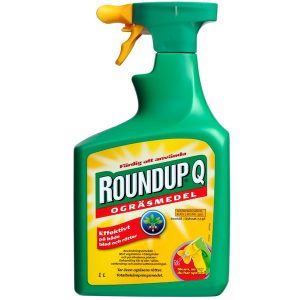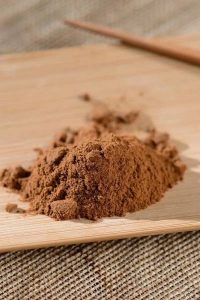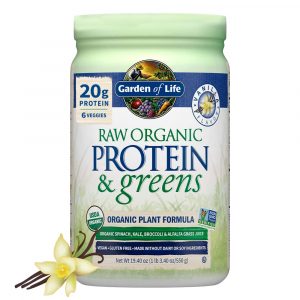
Whats in your pad or tampon?
A woman who uses tampons monthly will buy more than 11,000 in her lifetime. You’d think that there would be a safety information about such an intimate and often-used product, but there isn’t. Pick up a box of conventional sanitary pads and try to read the ingredients. You can’t because they aren’t listed. Why, you ask? Pads and tampons are considered “medical devices,” which means companies don’t have to disclose any of the ingredients they use in them. Other feminine care products, like sprays and wipes, are regulated as personal care products, which means companies can keep fragrance ingredients secret, as well. Unfortunately, tampons may contain traces of dioxin from bleach, pesticide residues from conventional, non-organic cotton, and mystery “fragrance” ingredients. These are not things a woman wants inside her body.

Whats really in your sanitary pads and tampons?
Feminine hygiene products can be a major source of plastic exposure. For example…Phthalates — which give paper tampon applicators that smooth feel and finish — are known to dysregulate gene expression, and DEHP may lead to multiple organ damage. Until the late 1990s, the cotton and/or rayon used to make the tampons were bleached with elemental chlorine gas which was known to leave dioxin residues. Dioxin is a pervasive environmental contaminant and a known human carcinogen. It accumulates in body fat over time with repeated exposure.
In response to fears of dioxin residues in feminine hygiene products, bleaching with elemental chlorine gas is no longer used. According to the FDA, sanitary products are now bleached via one of the following methods:
- Elemental chlorine-free bleaching: These methods include the use of chlorine dioxide gas as the bleaching agent as well as totally chlorine-free processes. Some elemental chlorine-free bleaching processes can still generate dioxins at extremely low levels. In practice, however, this method is considered to be dioxin free by the FDA.
- Totally chlorine-free bleaching. These methods are completely dioxin-free. Totally chlorine-free methods include, for example, use of hydrogen peroxide as the bleaching agent.
Is the dioxin really and truly gone with these new bleaching methods?
The FDA reports that dioxin can “theoretically” be created with chlorine free bleaching. In practice, however, it appears dioxin is still very much present. A study sponsored by the FDA Office of Women’s Health published in 2005, found “detectable levels of dioxin in seven brands of tampons,” including at least one 100 percent cotton brand.
Roundup in tampons?
According to a new study by the University of La Plata in Argentina, most tampons (at least 85 per cent), cotton balls and sanitary products contain glyphosate – the chemical used in Monsanto’s Roundup.

A study reported in The Huffington Post by Andrea Donsky and Dr. Joseph Mercola found that exorbitant amounts of plastic are found in conventional sanitary pads—the equivalent of four plastic bags.

The vagina is the most permeable organ in a woman’s body, absorbing 10-80% more than when exposed to the same toxins orally. Like all skin, it breathes in and absorbs whatever it’s exposed to yet it is far more absorbent than the skin on our arms and face.
Tampons shed fibers when they are submerged into liquid

Another scary thing I discovered as I was studying the subject was that loose fibers are left behind in your vagina when you use some tampons. Your body eventually flushes out the fibers, but until then you have chemicals stored in your body and these fibers can create a breeding ground for bacteria. That’s where Toxic Shock Syndrome can happen.”
If you want to test this, take a tampon and jiggle it in a glass a water and see what happens to the fibers!
Choosing Safer Products
You can protect yourself by choosing wisely. Switch to 100 per cent organic cotton brands that are better for the environment and safer for us. Look for brands that offer natural alternatives, like Seventh Generations, Organic and Natracare. They are free from bleach, pesticides and toxic chemicals.
Prove your buying power
By refusing to buy products from companies who don’t seem to care. If the company makes a highly toxic detergent, do you really feel safe buying your feminine hygiene products from them? When companies start to lose profits, they get very interested in hearing from consumers. They desperately try to understand the trends and mindset of consumers. Let them know that your health and safety is the new trend!
So, what’s the best and most safe option?
Below is a list of safe women’s products with organic and natural materials…
1. Natracare

Products | Organic feminine hygiene products with certified organic cotton and totally chlorine free, plastic free, biodegradable materials.
Mission | When Susie Hewson developed Natracare in the 1980s, she spent years researching the very best raw materials for the job. As well as important health considerations and ensuring that the products worked, Susie endeavoured to find materials that were:
- ethical – protecting the livelihood, homes and health of workers and communities where crops are made
- environmental – looking after the soil, water and air and ensuring low carbon dependency
- animal-friendly – not disrupting the habitats or health of animals, birds, bees and insects who make up ecosystems that are crucial for our planet’s wellbeing.
2. LOLA Tampons

Products | Organic tampons & pads delivered to your door.
Mission | LOLA’s founders set out to create an organic tampon and a brand that was completely transparent with customers about the ingredients in its products.Since launch, LOLA has also donated 100,000 feminine care products to low-income women and girls across the U.S.
Read More>>
2. Cora Tampons

Products | Organic tampons with PBA-free compact plastic applicator, delivered via subscription.
Mission | Cora’s team believes “that time of the month” should never be a source of shame, harm or uncertainty. (Also: excessively pink packaging.) And it should never keep a girl from getting her education. For every month’s supply of Cora you receive the company gives a month’s supply of sustainable pads to a girl in a developing country so she can do anything during her period.
2. Jade Pearl Sea Sponge Tampons

Products | All-natural sea sponge tampons, soft, & durable.
Mission | Jade & Pearl creates natural personal care products that are reusable, recyclable and sustainable. Their sea sponges tampons are free of chemicals, bleach, chlorine, fragrance, dyes or synthetic materials.
My personal favorite…
…is Natracare. I’ve been using their products for many years and I’m very happy with them. It feels good to know that I’m buying from a company who cares about the environment and that the products I’m using are the best, most healthy option for me. I haven’t tried any other organic brands, but I’m sure they are equally great. There are several organic brands for you to choose from and if you want to go completely tampon-free you can also choose a menstrual cup. I’ve never tried it, but there are several organic options to choose from…like this one from Mooncup. Read more>>

Let me know your thoughts. Share your question or thoughts in the comment box below.





Hi angela,
Is the moon cup really safe to use? Wouldn’t it just flop around in your panties?
thanks for this site! It really helped me understand what it means to have the right products for when i start and just know what to buy! 🙂
Angie
Hi Angie!
I haven’t tried the moon cup, but I’m curious about it. I don’t know what it feels like to use it. I’ve only used organic tampons. I’m sorry I couldn’t help you, but if you try the moon cup I’d love to know your thoughts about it. =)
Angela